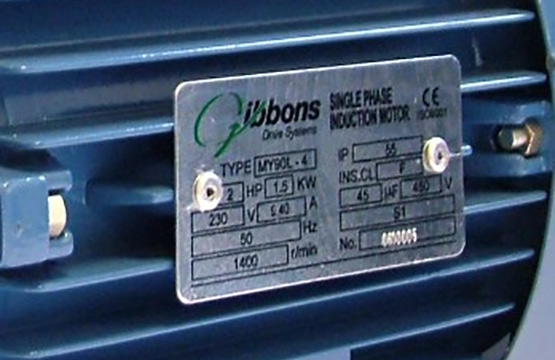

All motors originate from the manufacturer with a name or data plate affixed to the motor casing. This nameplate contains information that is essential to an effective motor testing program. It provides the operating characteristics and design parameters for that particular motor.
Occasionally you may be tasked to test a motor when no nameplate information is provided or readily available. For de-energized testing this doesn’t pose much of a problem as the data we are collecting is compared between phases, for balance, on polyphase motors. DC and single phase motors are more problematic as we don’t have the ability for phase comparison.
When testing a polyphase motor without nameplate information, we will not know the number of poles unless we perform a rotor influence check. The best way to do that is to test the motor as the rotor is stepped in 5 degree increments. When a complete cycle for inductance or impedance is obtained you can easily determine the number of poles. If a complete cycle is obtained in 45 degrees of rotation it is an 8 pole, 60 degrees 6 pole, 90 degrees 4 pole, and 180 degrees a 2 pole.
Another disadvantage to not having nameplate information is that we lose the ability to compare to like motors. This applies to both energized and de-energized testing.
Energized testing is extremely difficult without nameplate data. If similar motors are used for the same process you can use the nameplate data off of one of them. It may not be fully accurate, but-will get you in the ball park. If no similar units are available and you are not familiar with the process, talk to the operators. Use a strobe tachometer to determine motor RPM and then set up a generic motor in the database for that RPM. If loading cannot be provided by the operator use the acquired data and RPM to approximate loading. You can view the power factor for a value around 88 to 92 to approximate full load.
Testing without proper nameplate information is not desirable, but-possible. With a proper understanding of motor theory and operational characteristics of a motor, reliable data collection is still attainable.